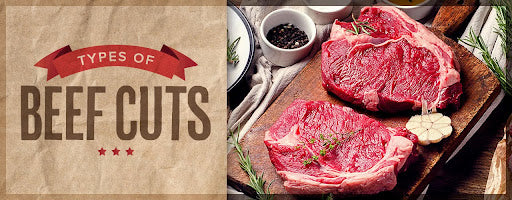
Beef is a popular ingredient in nearly every world cuisine, and it's easy to see why. From premium Argentinian asado to convenient fast food burgers, there is an endless number of uses for beef to suit any occasion. Learn how to differentiate between the different cuts and varieties so you can offer guests the perfect piece of beef at your butcher shop or your next event.
Primal Cuts of Beef
There are 8 main primal cuts of beef: chuck, rib, loin (consisting of the short loin and the sirloin), round, flank, plate, brisket, and shank. Divided by groups of muscles, the meat from each primal has its own unique flavor, texture, and level of fat and marbling due to how hard the muscles were worked.
Subprimal Cuts of Beef
Primals are cut and divided into subprimals, also known as "foodservice cuts." These large cuts are often purchased by restaurants in order to save money over buying individual steaks and to allow chefs to have full control over how their meat is cut and trimmed. Subprimals are further trimmed down into portion cuts, such as steaks, roasts, and ribs, which typically appear in grocery stores and on restaurant menus.
Best Cuts of Beef
The most tender cuts of beef come from the primals that are located farthest from the head and hooves, towards the center of the cow. These are some of the least hard working muscles on the animal, so they lack dense connective tissue. On the other hand, the primals that make up the legs and rump of the cow are not as tender but offer rich, beefy flavor. These strong muscles work hard during the animal's lifetime, developing rich fat marbling throughout the meat and a good deal of connective tissue.
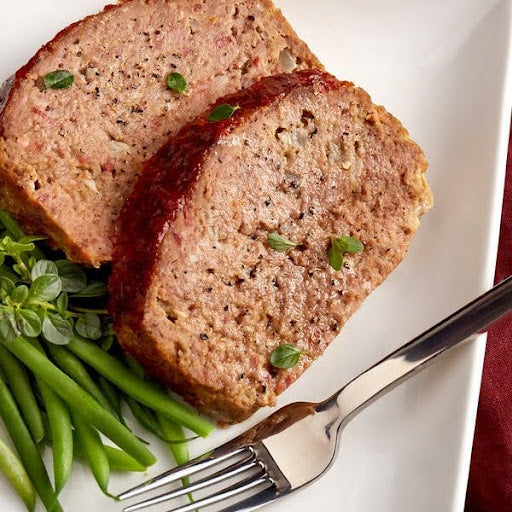
Different Types of Beef
Check out our list of the different beef primal cuts to learn more which subprimal and portion cuts come from each and the best cooking methods to use.
1. Chuck
The chuck primal consists of the shoulder and neck region of the cow. Due to its high amount of connective tissue and fat content, chuck beef cuts are tough, yet flavorful, and benefit from low and slow cooking methods to tenderize the meat. Ground beef is most commonly sourced from the chuck primal.
Chuck subprimal cuts: Chuck roll, shoulder clod, chuck tender, square chuck
Popular chuck portion cuts: Chuck shoulder roast, flat-iron steak, chuck short ribs, Denver steak, stew meat, and ground chuck
How to cook beef chuck: Braise, roast, stew, grill
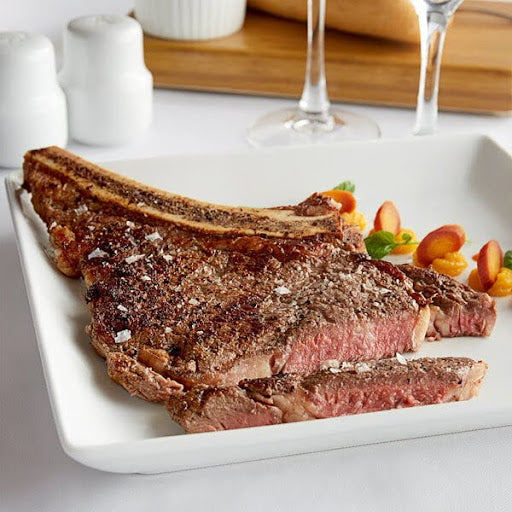
2. Rib
The rib primal consists of the top part of the center section of rib, specifically the sixth through the twelfth ribs of the cow. Featuring a rich, juicy flavor, beef cuts from the rib are some of the most tender cuts on the cow and can be cooked in a variety of ways.
Rib subprimal cuts: Ribeye roll, ribeye subprimal, 7-bone rib
Popular rib portion cuts: Ribeye steak, prime rib, ribeye filet, cowboy steak, back ribs, short ribs
How to cook beef ribs: Smoke, roast, braise, grill, broil
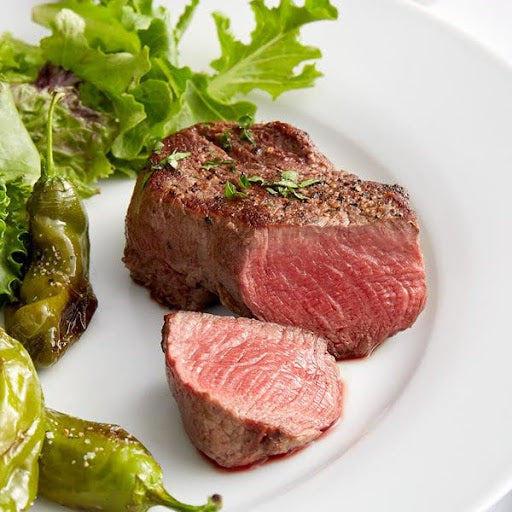
3. Loin
The loin primal is located behind the ribs and it is not a heavily used muscle, which makes for some of the most tender meat on the cow. Because of its tenderness, the loin is where some of the most desirable, and expensive, beef cuts can be found, such as T-bone steak and porterhouse steak from the short loin and filet mignon from the tenderloin. Beef cuts from the loin primal dry out fast when cooking, so they are typically best for quick, high heat cooking methods to preserve their prized flavor.
Loin subprimal cuts: Tenderloin, strip loin, short loin, top sirloin, bottom sirloin
Popular loin portion cuts: Filet mignon, porterhouse steak, T-bone steak, tri-tip roast, New York strip steak
How to cook beef loin: Grill, broil, pan-sear
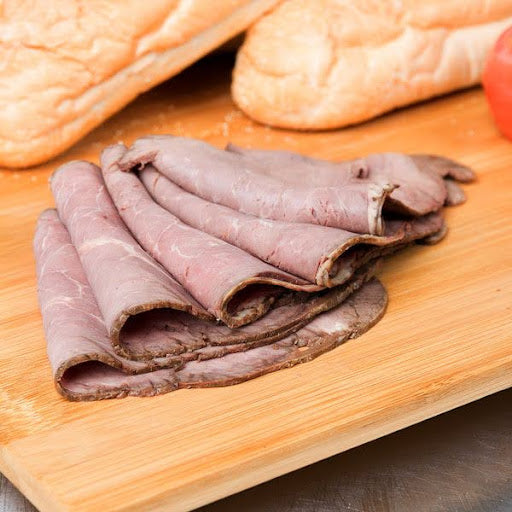
4. Round
The round primal consists of beef cuts that come from the rump, hips, hind legs, and knees of the cow. Because it is made up of hard-working muscles that contain a lot of connective tissue and a lower fat content, round primal beef cuts are tougher and less expensive cuts of beef. When cooked properly, these beef cuts can be tender and have a delicious, beefy flavor. For best results, slow-cook or marinate prior to high heat cooking to tenderize. The most common use for a round roast is to make roast beef for sandwiches.
Round subprimal cuts: Bottom round, top round, eye of round, sirloin tip
Popular round portion cuts: Rump roast, top round steak, eye of round steak, top round
How to cook beef round: Braise, roast, grill, pan sear
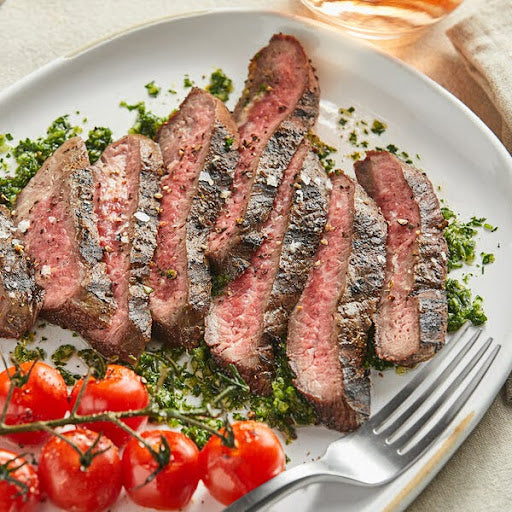
5. Flank
Located below the loin, the flank primal produces one cut of beef: flank steak. It is a tough and lean yet flavorful section of the cow that works best when marinated prior to grilling at high heat. It is also often used to make ground beef.
How to cook beef flank: Grill, broil, braise
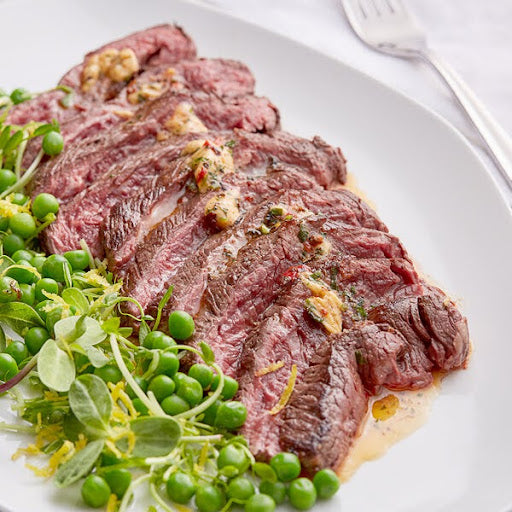
6. Plate
Located near the stomach on the diaphragm, plate primal beef cuts are fairly tough and fatty. Many beef cuts from the plate primal are best for fast, high heat cooking, like skirt steak and hanger steak, while some cuts are better for braising, like short ribs.
Plate subprimal cuts: Hanger steak, inside skirt steak, outside skirt steak, plate short ribs, Franken short ribs
Popular plate portion cuts: Short ribs, ground beef, skirt steak, bacon
How to cook beef plate: Grill, pan-sear, broil, braise
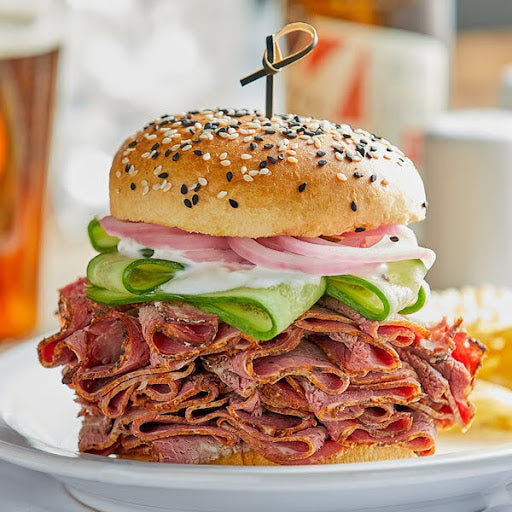
7. Brisket
The brisket primal cut consists of the cow’s breast. Because brisket comes from a well-worked muscle of the cow, it benefits from marinating and low and slow cooking methods to achieve the melt-in-your-mouth texture and rich, beefy flavor that makes it so popular for barbecue. In addition to traditional smoked brisket and burnt ends for barbecue, brisket is also the traditional beef cut to use for corned beef.
Brisket subprimal cuts: Brisket flat half, brisket point half
How to cook beef brisket: Braise, smoke, sous vide, roast
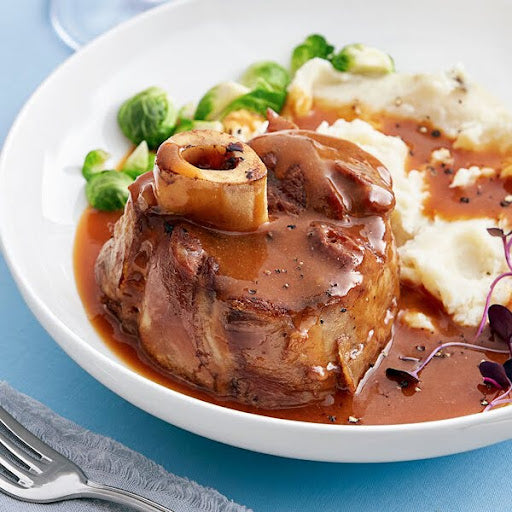
8. Shank
The shank primal, which consists of the cow’s forearms, produces two beef cuts: shank cross-cut and shank center-cut. Known for their tough, sinewy texture, shank is not a popular cut of meat, nor is found at many retail stores. Braised shank can give way to very tender meat, and is most popularly used for the Italian Osso Buco dish. Shank is also commonly used for ground beef and stew meat.
Shank subprimal cuts: Shank cross-cut, shank center-cut
How to cook beef shank: Braise, stew
